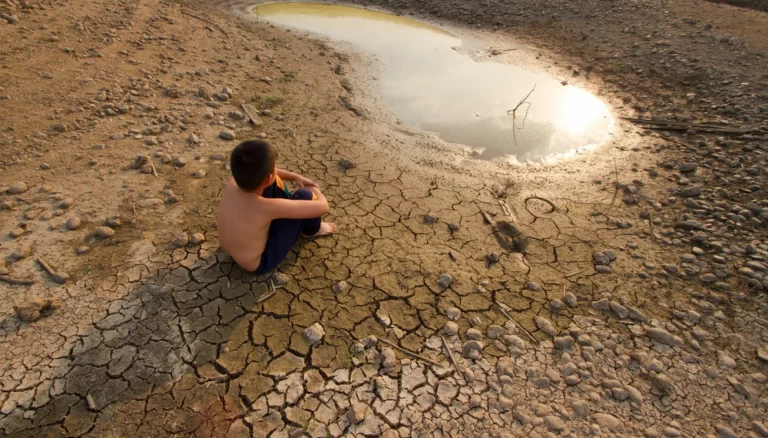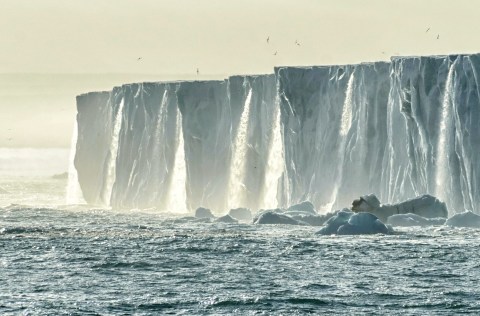
“The climate is always changing!” So goes a familiar mantra among climate deniers who maintain that there is nothing unusual about this moment. They claim that there is no climate crisis since the Earth has already endured significant warming.
The Mesolithic stage of prehistory is also known as the ‘Middle Stone Age’. Both Mesolithic and Neolithic phases belong to the Holocene era. In this era, there was a rise in temperature, the climate became warm which resulted in melting of ice and also brought changes in flora and fauna.

There was undoubtedly prehistoric global warming, which was typically caused by natural processes such as volcanic activity and fluctuations in solar radiation. However, the current rate and breadth of global warming are unprecedented in millions of years. Human activity, particularly the generation of greenhouse gases such as carbon dioxide, is the primary driver of this rapid warming. This is a serious issue that requires immediate attention.
Republican presidential candidate Vivek Ramaswamy has demonstrated common fallacies regarding our planet’s climatic history. When he claimed that “carbon dioxide as a percentage of the atmosphere is still at a relative low throughout human history,” he didn’t only make a misleading assertion (carbon dioxide concentrations are at their highest in at least 4 million years). He also shown fundamentally incorrect thinking on the climate crisis.
What concerns us today isn’t the precise concentration of CO2 in the atmosphere or the precise temperature of the globe, as concerning as those two measures are. Instead, it is the unprecedented rate at which we are creating carbon pollution through the use of fossil fuels, as well as the rate at which we are warming the world.

Consider the warming event that paleoclimatologists believe is the greatest natural analog for the current rapid greenhouse-driven trend. The Paleocene-Eocene Thermal Maximum occurred 56 million years ago, around 10 million years after the dinosaurs died out due to climate change (a major asteroid impact event triggered a global dust storm and, as a result, fast cooling). The PETM warming was caused by an exceptionally massive and rapid infusion of carbon dioxide into the atmosphere from Icelandic volcanic eruptions. Global temperatures rose by around 10 degrees Fahrenheit in as little as 10,000 years, potentially reaching a sauna-like 90 degrees Fahrenheit from an already hot baseline of 80 degrees Fahrenheit.
By geological standards, such warming rate of around 0.1 degree Fahrenheit per century is quite rapid. However, it is still around ten times slower than current warming. The impact event and the Paleocene-Eocene Thermal Maximum were, strangely, beneficial to humanity because they paved the way for our forefathers. The extinction of the dinosaurs (except for the ancestors of birds) created a new niche for early mammals, and the suffocating conditions of the Paleocene-Eocene Thermal Maximum selected for small, arboreal mammals, including Dryomomys, the oldest primate identified clearly by fossil materials.
In contrast to the current warming, which lots of evidence demonstrates is a threat to human life, our species would not have arrived at this point without either of these two catastrophes.
Extinctions occurred after another warming episode in our recent history, some 18,000 years ago, when the last ice age ended. Over the next 8,000 years, the world warmed by around 10 degrees Fahrenheit due to Earth’s altered orbit relative to the sun and a heightened greenhouse effect as warming oceans gave up their carbon dioxide in the same manner that an open bottle of warm soda loses carbonation.
That rate of warming, which was approximately ten times slower than it is now, was fast enough to wipe out entire species. The beautiful woolly mammoths and mastodons, enormous ground sloths, and saber-toothed cats that once roamed North America’s prairies have vanished. They were wiped out by a combination of climatic change and overhunting by paleo-Americans.
He spoke at a climate change discussion at the tar pits museum in the fall of 2017, which is located in the heart of those historic pools of asphalt — the sticky, evaporated leftovers of crude oil that crept to the surface from deep below. I couldn’t help but notice another irony: crude oil from beneath the Earth’s surface threatens us today because we’re caught up in it politically rather than physically.
The atmosphere plays an important role in the speed at which climate change can occur. During the last ice age, it meant that in some places on Earth temperatures increased by 10 degrees centigrade in a single decade
Now a days its even worsening and we must RE_THINK which kind of environment are we going to leave as a legacy to our future genrations.. Its call for SOS; NOW or NEVER !!
Carbon Nutality: reduction in Co2 emissions , Green House gases are some must to do acts… Team Newz Quest
